List of former sovereign states
A historical sovereign state is a state that once existed, but has since been dissolved due to conflict, war, rebellion, annexation, or uprising.
This page lists sovereign states, countries, nations, or empires that have ceased to exist as political entities, grouped geographically and by constitutional nature.
Criteria for inclusion
The criteria for inclusion in this list is similar to that of the List of states with limited recognition. To be included here, a polity must have claimed statehood and either:
- had de facto control over a territory, a population, a government, a capacity to enter into relations with other states, or
- have been recognised as a state by at least one other state.
For purposes of this list, the cutoff between medieval and early modern states is the Fall of Constantinople in 1453.
Ancient and medieval states
Modern states and territories by geography
Africa
Morocco (Maghreb al-Aksa)
- Saadi principality of Sus and Tagmadert (independence recognized in 1527 through the treaty of Tadla, reunified with Morocco after the Saadi dynasty overthrew the Wattasid dynasty in 1549)
- Naqsid principality of Tetouan (independence from Morocco in 1597, annexed to Morocco in 1673)
.svg.png)
- Alaouite principality of Tafilalet (1631–1666, reunified with Morocco)

Egypt, Sudan and Libya
.png)
.svg.png)
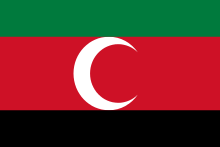
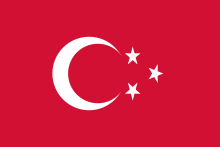

.svg.png)
.svg.png)
.svg.png)
.svg.png)
.svg.png)

.svg.png)
Modern Algeria (Central Maghreb)


Comoro Islands
.svg.png)
.svg.png)
.svg.png)
.svg.png)
Madagascar

.svg.png)



.svg.png)
.svg.png)
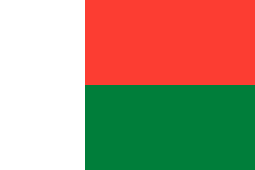
Sub-Saharan Africa
- Oyo Empire 1300–1896

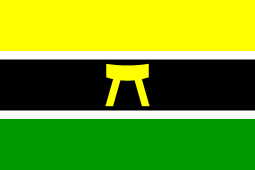
- Ibadan Empire 1860–1893
Horn of Africa

_flag_according_to_1576_Portuguese_map.svg.png)

.svg.png)
.svg.png)
.svg.png)




- Marehan Sultanate 17th–19th century
_flag_according_to_1576_Portuguese_map.svg.png)
- Warsangali Sultanate (1298–1886), (1897–1960)
Western Africa
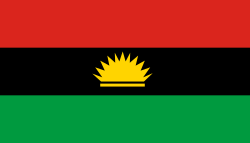

- Songhai Empire (c. 1340–1591, annexed by Morocco)
- Jolof Empire (1350–1549)
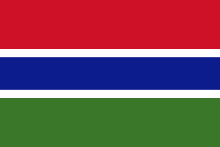


- Empire of Great Fulo (Denanke Kingdom) (1490–1776)
- Sultanate of Damagaram (1731–1851)
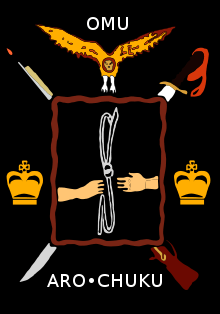

- Bamana Empire (1712–1861)
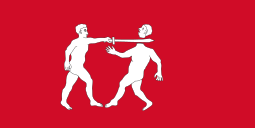
.svg.png)
- Bundu – fell to France in 1851

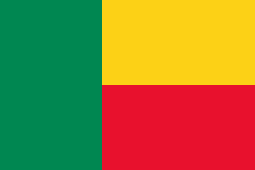
- Dendi – annexed by France 1901
- Fante Confederacy – 1874, to the United Kingdom

.svg.png)

- Futa Toro (1725–1861)
- Kaabu (1537–1867)
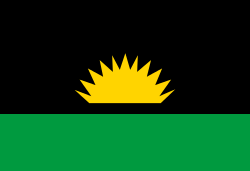

- Mossi States – conquered by France 1894–95
- Oyo Empire – made a British protectorate in 1888
- Kingdom of Sine – became a French protectorate
- Toucouleur Empire – fell to France in 1890
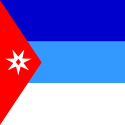
African Great Lakes
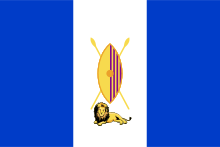



.png)
.svg.png)
.svg.png)
Eastern Africa
.svg.png)
- Pemba (mid-13th century)
.svg.png)
.svg.png)
.svg.png)
.svg.png)
Central Africa
- Anziku – became a French protectorate in 1875
- Baguirmi – fell to France in 1897
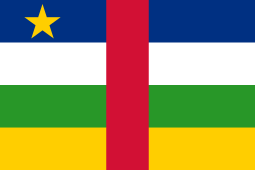
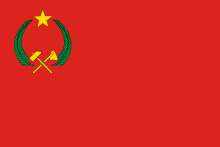

- Kasanje – annexed by Portugal in 1910

- Kuba – fell to Belgium in 1900
- Kazembe
- Luba – fell to Belgium in 1889
- Lunda – annexed by Belgium, Portugal and United Kingdom in 1887
- Matamba (1631–1744)
- Ndongo – fell to Portugal in 1671
- Ouaddai – fell to France in 1912
- Yeke – fell to Belgium in 1891
Southern Africa
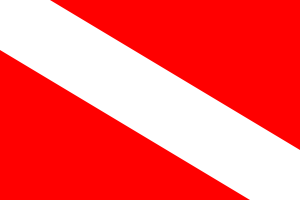

- Kingdom of Butua (1450 – c. 1683)
- Gaza Empire (1824–1895) – fell to Portugal
- Matabeleland (?–1891) – became British protectorate
- Mthwakazi (1830s–1889) – became British protectorate


- Rozvi Empire (1684–1834)
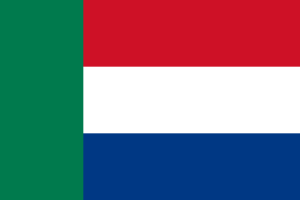

_by_Roberto_Breschi_taken_from_The_South_African_Flag_Book_by_A.P.Burgers.png)
.svg.png)


.svg.png)
Asia
Central Asia

- Uzbek Khanate (1428–1471)
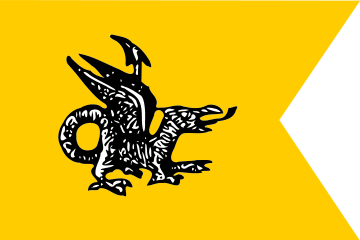
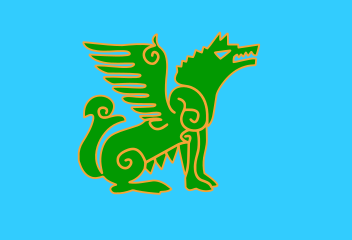






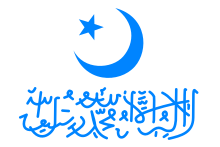

East Asia


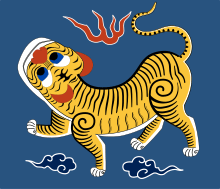
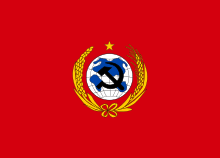

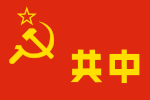
.svg.png)
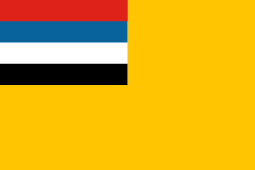
.svg.png)


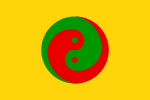
.svg.png)
.svg.png)
.svg.png)
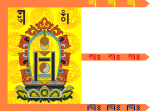
.svg.png)
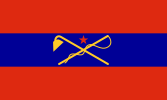

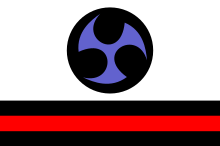


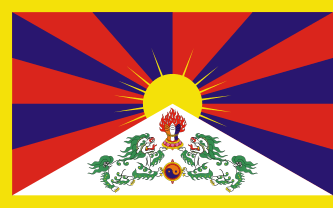

.svg.png)
- Urjanchai Republic (1911–1914)
.svg.png)
West Asia
Afganistan

.svg.png)
_(variant).svg.png)
.svg.png)
.svg.png)
.svg.png)

.svg.png)
Anatolia

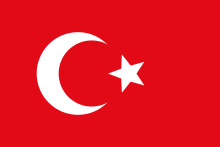
Mesopotamia
.svg.png)
.svg.png)
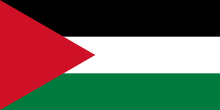
Persia
.svg.png)

.png)
.svg.png)
.svg.png)
Levant
.svg.png)

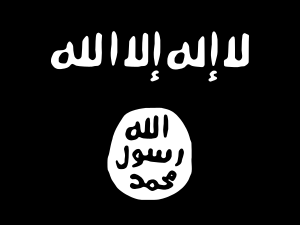
Arabian Peninsula



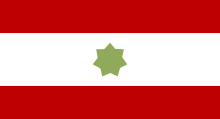


- Idrisid Emirate of Asir (1906–1934)

.svg.png)

.svg.png)
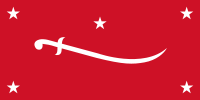
- Federation of Arab Emirates of the South 1959–1962
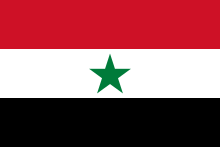
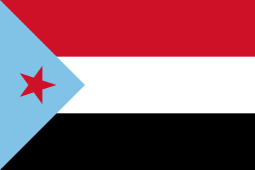


South Asia
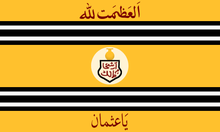
- Bengal Sultanate (1352–1576)




- Bijapur Sultanate (Adil Shahi dynasty, 1490–1686)

.svg.png)

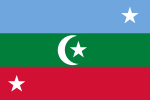
Southeast Asia
- In Indonesia (Dutch East indies) :
- Srivijaya (650–1377)


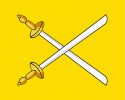

- Sultanate of Demak (1475–1548)
- Kingdom of Pajang (1568–1586)
- Sultanate of Palembang (?–1821)


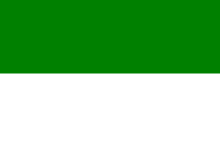





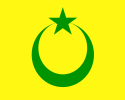

- In Malaysia :
.svg.png)
- Sultanate of Malacca (1400–1511)
.svg.png)
- In Burma (Myanmar)
- Mon kingdoms (9th–11th, 13th–16th, 18th centuries)
- Ava (1364–1555)
- Pegu (1287–1539, 1747–1757)
- Mrauk U (1434–1784)
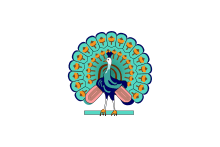

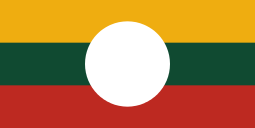
- Arakan (1287–1784)
.svg.png)
.svg.png)
.svg.png)
- In the Philippines

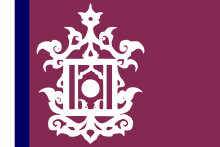
- Rajahnate of Maynila (1500s–1571)
- Confederation of Madja-as (1200s–1569)
- Tondo (historical polity) (900–1589)
- Namayan (1175–1571)
- Kingdom of Taytay, Palawan (Existing centuries earlier than 1521 when it was discovered by Magellan's men. Remained until early 1800s.)
- In Singapore:
- Kingdom of Singapura (1299–1398)
- In Indochina :
- Champa kingdom (192–1832)

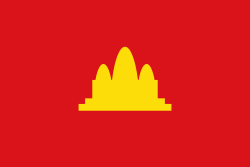
.png)
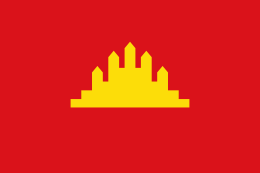
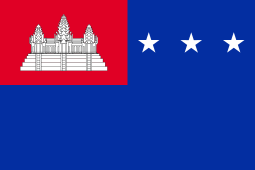
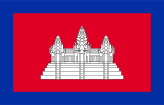
.svg.png)


.svg.png)
Caribbean

.svg.png)
.png)
.svg.png)
.svg.png)
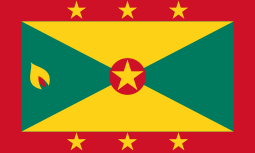
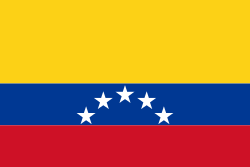

Europe
Nordic countries
In the Nordic countries, unions were personal, not unitary

.svg.png)

.svg.png)
.svg.png)
.svg.png)
.svg.png)

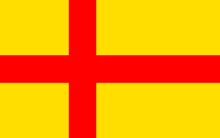

Modern France
.svg.png)

.svg.png)
.svg.png)
.svg.png)
.svg.png)
.svg.png)
.svg.png)
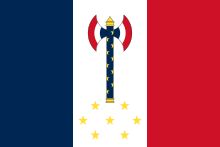
.svg.png)
.svg.png)
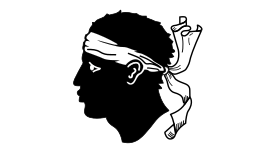



.svg.png)
Modern Germany
- Samo's Empire (631–658)




.svg.png)
- Confederation of the Rhine (1806–1813)

.svg.png)
.svg.png)
.svg.png)
.svg.png)
.svg.png)
.svg.png)

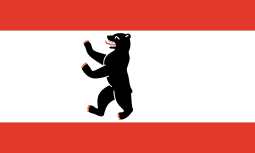

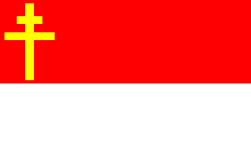




.svg.png)
.svg.png)

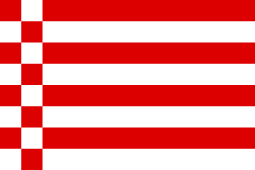
.svg.png)

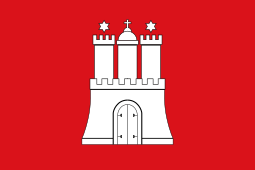
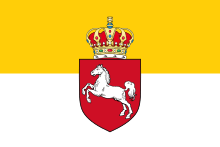
.svg.png)

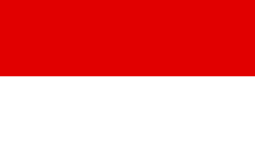


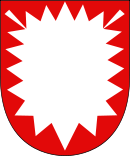




.svg.png)
.svg.png)

.svg.png)
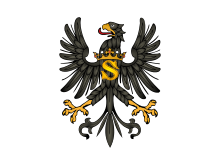
.svg.png)
.svg.png)


.svg.png)
.svg.png)
.svg.png)
.svg.png)
.svg.png)

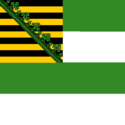
.svg.png)
.svg.png)
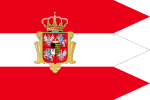






Italy
.svg.png)



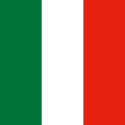
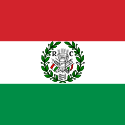

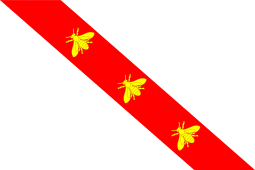

.svg.png)

.svg.png)
- Emirate of Bari (847–871)
.svg.png)



.svg.png)
.svg.png)
.svg.png)

.svg.png)


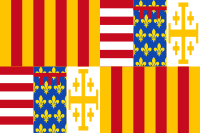


.svg.png)
.svg.png)

.svg.png)
.svg.png)


- Emirate of Sicily (831–1091)
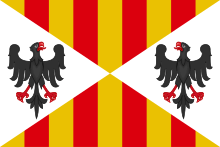


.svg.png)
.svg.png)
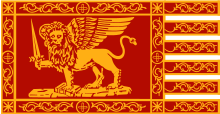
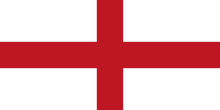
_crowned.svg.png)
.svg.png)
.svg.png)

Modern United Kingdom
.svg.png)


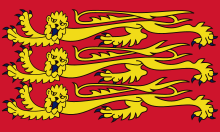

.svg.png)
.svg.png)

Ireland

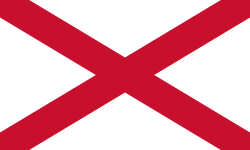
- Kingdom of Uí Failghe (Unknown–1550)





Medieval Ireland
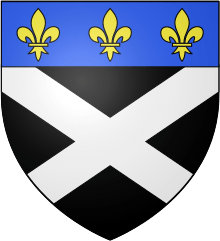
- Airgíalla (331–1585)
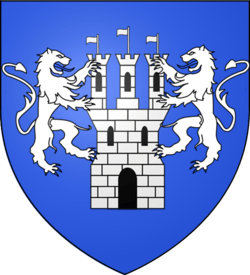
- Ailech (450–1617)
.png)

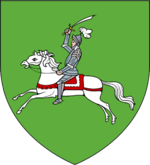
- Magh Luirg (c. 956–1585)
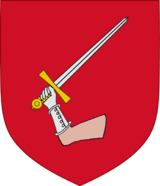
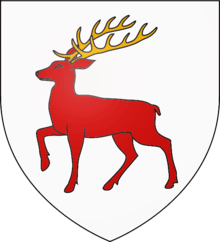

Low Countries

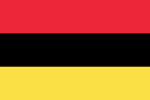
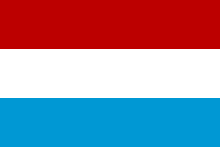
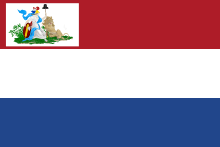




.svg.png)
.svg.png)
Modern Poland



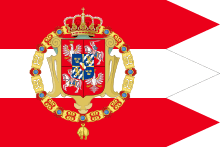
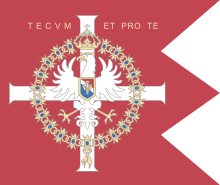

_Lob.svg.png)



.svg.png)
.svg.png)
.svg.png)


.svg.png)
- Freistaat Schwenten (1919)
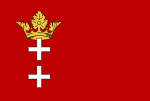
.svg.png)
Ukraine
- Kievan Rus' (882–1240)





.svg.png)





.svg.png)
Crimea

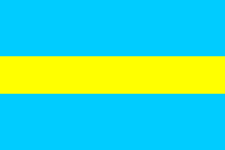
.svg.png)
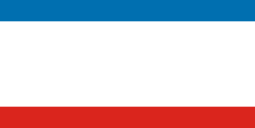
Baltic countries and Belarus
.svg.png)




.svg.png)



.svg.png)

.svg.png)

.svg.png)
.svg.png)
Romania and Moldova
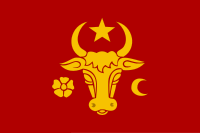

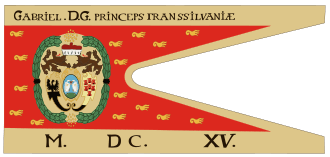
.svg.png)

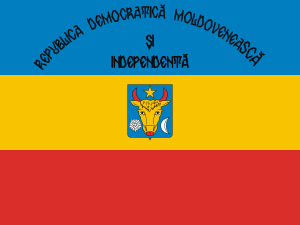
.svg.png)
Russia
- Kievan Rus' (882–1240)


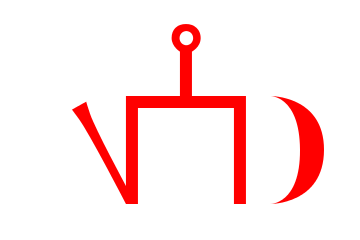
- Astrakhan Khanate (1466–1556)


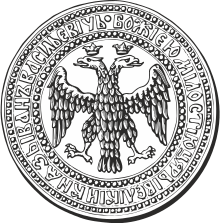


.svg.png)





.svg.png)




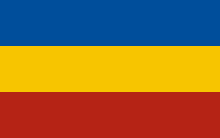



.svg.png)
.svg.png)
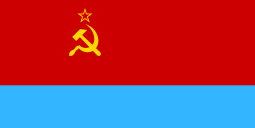
- Transcaucasian Soviet Federative Socialist Republic (1919–1936)
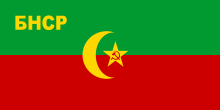

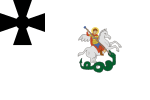
Hungary
.svg.png)
.svg.png)
.svg.png)
.svg.png)
.svg.png)
.svg.png)
.svg.png)

Czech Republic and Slovakia
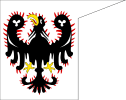
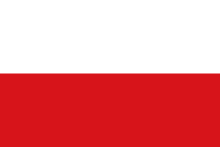
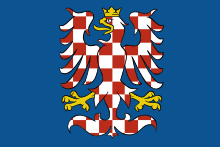

.svg.png)


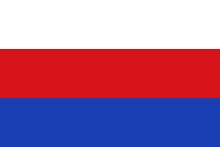




Balkans
.svg.png)





.svg.png)


.svg.png)
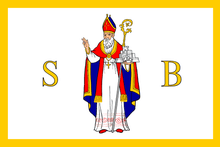
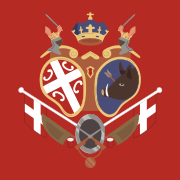
.svg.png)
.svg.png)


.svg.png)
.svg.png)

- Republic of Prekmurje (1919)
.svg.png)

.svg.png)

.svg.png)
%3B_Flag_of_Serbia_and_Montenegro_(2003%E2%80%932006).svg.png)
%3B_Flag_of_Serbia_and_Montenegro_(2003%E2%80%932006).svg.png)
- First Bulgarian Empire (681–1018)



.svg.png)


.svg.png)
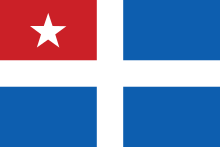
.svg.png)
- Strandzha Commune (1903)
.svg.png)
.svg.png)
.svg.png)


- Principality of Albania (1358–1392)
.svg.png)

.svg.png)



.svg.png)
.svg.png)
.svg.png)
.svg.png)
.svg.png)

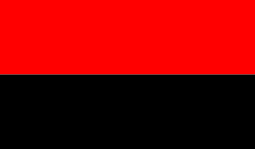
Caucasus



.svg.png)




Iberian Peninsula


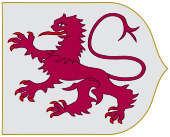

.svg.png)
.svg.png)

-Variant.svg.png)

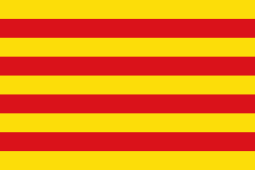

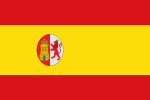

.svg.png)

.svg.png)


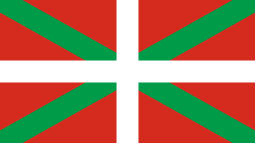

.svg.png)

North America
| Name | Location | Origin | Fate | Notes |
|---|---|---|---|---|
| Huron Confederacy | Central Ontario. | Confederacy of five Iroquoian tribes and several smaller groups. Controlled trade in corn and furs in the upper Great Lakes area and sporadically through the Ottawa and St. Lawrence River valleys. | The Hurons were dispersed by the Iroquois in 1649. Many fled to the northern Lake Michigan region and Quebec, while a large group joined the Iroquois. | |
| Upstate New York and surrounding areas. | Formed before European contact; arguably as early as 31 August 1142, though also likely sometime in the 15th to 17th centuries. | The Treaty of Canandaigua, signed in 1794, established relations between the United States government and the Iroquois; the treaty is still in force, though the Confederacy is no longer effectively an independent nation. | ||
| Originally in the southeastern United States, primarily Georgia, South Carolina, and North Carolina, and parts of Alabama and Tennessee. Parts of The Nation (and its government structures) ended up in present-day Oklahoma. | The original Cherokee Nation was unified from an interrelated society of city-states in the late 18th century. They enjoyed relatively peaceful relations with the Spanish, British, French, and later (with the exception of the Chickamauga factions), to the U.S. | The modern Cherokee Nation, the Eastern Band of Cherokee Indians and the United Keetoowah Band of Cherokee Indians are the three federally recognized tribal successors to the original Cherokee Nation, being somewhat autonomous within the United States. | ||
| State of Vermont. | Organized by Moses Robinson, Thomas Chittenden, and others in 1777 from territory claimed by New York and New Hampshire. | Admitted as a state to the United States of America in 1791. They were originally a part of British North America via the newly conquered province of Quebec. | Originally known as Republic of New Connecticut, it had the first written national constitution in North America. | |
| State of Franklin | Northeastern part of the Washington District, North Carolina (easternmost Tennessee). | Seceded from North Carolina 23 August 1784. | Government was largely abandoned and the area officially re-incorporated into North Carolina in 1789. | Applied for admission to the United States as a separate state. Whether Franklin considered itself independent of the United States is unclear. |
| Western Florida, near Tallahassee, might have claimed parts of Georgia (U.S. state) and Alabama. | Creek and Seminole Indians under English adventurer William Augustus Bowles declared independence in 1799. | Annexed by Spain in 1803. | ||
| All of modern-day Mexico, parts of modern-day United States (California, Nevada, Arizona, Utah, New Mexico, Texas with parts of Colorado, Wyoming, Kansas and Oklahoma) and Central America (without Panama). | After independence from the Kingdom of Spain, Mexico decided on a monarchical system of government, backed by Mexican conservatives and some liberals. A European prince was sought, but Spain prohibited any from taking the throne. Agustín I, in the meantime, was proclaimed emperor of Mexico in 1821. | In December 1822, Generals Antonio López de Santa Anna and Guadalupe Victoria wrote and signed the Plan of Casa Mata, an agreement between the two generals, amongst other Mexican generals, governors, and high-ranking governmental officials, to abolish the monarchy and replace it with the United Mexican States, which was done in 1823. | Emperor Maximilian I of Mexico, head of the Second Mexican Empire, adopted Agustin's grandsons. Their descendants live in exile. | |
| Gulf Coast of the United States, parts of present-day Louisiana, Mississippi, and Alabama. | Rebelled and declared independence from Spain on 3 September 1810. | The Republic lasted only 90 days. It was annexed by proclamation of U.S. President James Madison and was helped by the U.S. Army to annex it into the U.S. upon its entry to Baton Rouge on December 10, 1810. | West Florida was split between the Territory of Orleans and the Mobile District. Spain formally relinquished its claim under the Adams-Onis Treaty of 1819. | |
| Republic of Indian Stream | Pittsburg, New Hampshire | Formed 9 July 1832 in territory claimed by both the United States and the United Kingdom, where the treaty description of the border was unclear. | Voted to annex to the United States in 1835, Britain relinquished claim in January 1836, and U.S. jurisdiction was acknowledged around May 1836. The Webster–Ashburton Treaty in 1842 settled several U.S.-British border disputes dating from 1783, including the division of the former area of Indian Stream. | |
| Texas and some surrounding territory. | Seceded from Mexico in 1836. | Voluntarily annexed to the United States and admitted as a state in 1845. | Annexation to the U.S. triggered the Mexican–American War the next year 1846. | |
| California, though based in Northern California. | American settlers declared independence from Mexico in June 1846. | Controlled by U.S. Navy in July 1846 upon the declared United States' occupation of present-day California. | The area of influence was confined to Sonoma, California, 30 miles north of San Francisco; it did not cover the large area that became the present-day state of California in 1850. | |
| Southern California, centered in San Jose and Santa Barbara. | After U.S. occupation of Los Angeles in 1846, the Californios revolted and defeated an American force on 30 September 1846. | Signed the Treaty of Cahuenga on 13 January 1847, accepting American sovereignty over California. | ||
| Modern day Mexico | Mexico's second monarchy was formed when Napoleon III set Maximilian I, of the House of Habsburg, on the throne of Mexico in 1864. His consort was Carlota of Mexico, a Belgian princess. France occupied Mexico, starting in 1861. Many Mexicans, including the nobility, backed his government. | Maximiliano's rule was blemished by constant conflict. Liberals found backing from United States after the Civil War in 1865, and the French withdrew in 1867, leaving Maximilian and his supporters on their own. Maximilian was captured and, on orders of Benito Juárez, executed in the Cerro de las Campanas near Querétaro. | ||
| Republic of Manitoba | Manitoba | Founded in June 1867 by Thomas Spence at the town of Portage la Prairie in Rupert's Land or the "Northwest Territories". | By late spring 1868, the Republic had been informed by the Colonial Office in London that its government had no power. The Province of Manitoba was organized within Canada on 12 May 1870, and promised the Metis people of Manitoba an autonomous government. | |
| The Great Republic of Rough and Ready | Northern California | Hoping to avoid paying a recently introduced tax on new mining claims, in April 1850 residents of the town of Rough and Ready drew up articles of secession, forming the "Great Republic of Rough and Ready." | The new country lasted only three months, until an Independence Day change of heart convinced the miners to vote themselves back into the union. | |
| Newfoundland and Labrador. | A former Crown Colony which had rejected confederation with Canada in 1869, the Dominion of Newfoundland was established on 26 September 1907. | Newfoundland entered into confederation with Canada on 31 March 1949, becoming a province. | In 1934, Newfoundland voluntarily gave up self-government and reverted to direct control from London. | |
| Olmec nation | In and around Veracruz and Tabasco. | Arose approximately 1200 BC. | Decline through approximately 400 BC. | First people to use zero. |
| Toltec kingdom/empire | Central Mexico. | sometime after 750. | Destroyed by Chichimeca ("barbarian") invasions around 12th century AD. | |
| Central Mexico, might extended northward to present-day U.S. by the Mexican border, and southward towards Central America (El Salvador, Guatemala and Honduras). | 1325, founded Tenochtitlan (present-day Mexico City). | 1521, conquered by Hernán Cortés. When he and his crew first arrived in 1519, it was thought to be the world's largest city. | ||
| Tlaxcala, Mexico, north of Mexico City. | unknown (present in 1521). | Absorbed by Spanish conquest into New Spain. | Never conquered by Aztec Empire, assisted Hernán Cortés in his campaign against the Aztecs in 1520. | |
| Zapotec kingdom | Oaxaca and surrounding areas of southern Mexico. | unknown (present in 1521). | Submitted to Spain in 1551 after previous resistance against the Spaniards. | |
| Maya civilization | Southern Mexico, Guatemala, Honduras, and Belize. | Political structures formed by about 250 AD. | Last Mayan kingdom conquered on 13 March 1697 by the Spaniards, and later the British in Belize. | Mayan political structures tended to center around the person of the king; even when one king conquered another, the result was usually a tributary arrangement, and the identity of the conquered kingdom persisted. |
| Viceroyalty of New Spain and Captaincy General of Guatemala | Withdrew from Spain on November 6, 1813. | It became the Mexican Empire. | The United Provinces of Central America seceded from Mexico one year later (1814). | |
| Mexican states of Coahuila, Nuevo León, and Tamaulipas, and the U.S. state of Texas along the Rio Grande. | Withdrew from Mexico on 17 January 1840. | General Canales, commander of the forces of the Republic of the Rio Grande, accepted a command in the Mexican Army on 6 November 1840. | The Republic of the Rio Grande claimed territory north to the Nueces River and the upper Medina River, territory also claimed by the Republic of Texas by 1845. | |
| Yucatán Peninsula, Mexico (The modern states of Yucatán, Campeche and Quintana Roo) were later separated from the state of Yucatán. | Declared independence 1840, due to dislike of centralization of Mexican government. | Resolved differences with central government and rejoined partially to Mexico in December 1843 with self-government. Rejoined Mexico to obtain assistance against Mayans in the Caste War of Yucatán, treaty signed 17 August 1848. | Republic of Yucatán declared neutrality in Mexican–American War 1846–48. | |
| Guatemala, El Salvador, Honduras, Nicaragua, and Costa Rica with a southern portion of Chiapas, Mexico. | Formed in aftermath of independence from Spain in 1823. | Confederation dissolved civil war in 1840. | Attempts were made to reunite in 1842–44, 1852, the 1880s, 1896–98 and 1921–22. | |
| Quintana Roo Territory. | Formed during the Caste War of Yucatán, named about 1850. | The eponymous capital was conquered by Mexico on 5 May 1901, though low-level fighting persisted for another 10 years. | Withdrawal of British recognition and end of trade with Belize in 1893 led to eventual reconquest by Mexico. | |
| Baja California, Baja California Sur, Sonora | Declared an independent state by filibuster William Walker January 10, 1854. | Disestablished May 8, 1854. | After he was captured William Walker was put on trial in California and acquitted by the jury. | |
| Navy Island | Declared an independent state by William Lyon Mackenzie 17 December 1837. | Disestablished 4 December 1838. | The objective was a rebellion in Upper Canada |
Oceania




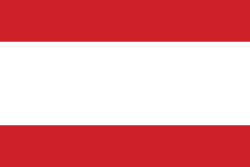
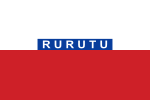

.svg.png)
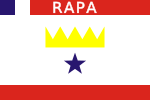
- Kingdom of Mangareva (till 1881, French protectorate since 1844/1871)
- Taiohae Kingdom of Nuku Hiva (till 1901, sovereignty ceded to France in 1842)
.svg.png)
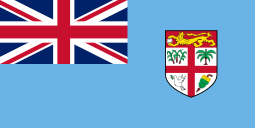
.svg.png)
.svg.png)
.svg.png)
- Patu-iki or Kingdom of Niue (c. 1700–1900)


- Saudeleur Dynasty (ca. 1100–ca. 1628)

- Kingdom of Nauru (till 1888)

South America
| Name | Location | Origin | Fate | Notes |
|---|---|---|---|---|
| present-day state of Acre, Brazil. | Created 1899 declaring independence from Bolivia. | Annexed by Brazil in the Treaty of Petrópolis. | Three attempts at independence in 1899, 1900, and 1903. | |
| present-day Eastern Patagonia in Argentina, and the Araucanía in Chile. | Created 1860 by the French lawyer Orelie-Antoine de Tounens who was appointed king by indigenous Mapuches. | It never controlled its vast territory and was an unrecognized state. Lost the only portion of land under its control, Perquenco, in 1862 to Chile. | The micronation was allied with Napoleon III of France. | |
| Kingdom of Chimor | Indigenous people of northern Peru and Ecuador. | unknown (present in 1531). | Incorporated into the Inca Empire in the 1470s. | Chimors or the Chim migrated from Colombia over 1,000 years ago. |
| present-day Colombia, Venezuela, Ecuador and Panama. | Created 1819 during wars for independence from Spain. | Broke apart in 1830, formally dissolved in 1831. Successor states were Colombia, which included present-day Panama, Venezuela, and Ecuador. | Its official name was República de Colombia: there never was a state called "Greater Colombia" or "Gran Colombia"; this is an addition by later historians in order to distinguish it from the present-day Republic of Colombia. Although the literal translation is "Great Colombia", historians have traditionally chosen to translate it as "Greater Colombia". | |
| rural Colombia | Created during the aftermath of "La Violencia" in 1948 | Eventually overrun by the National Army of Colombia (during "Operation Marquetalia") in May 1964. | It was an unrecognized communist state. | |
| large parts of modern Ecuador, Peru, western and south central Bolivia, northwest Argentina, north and north-central Chile, and southern Colombia. | around 1197 | Spanish conquest of the Inca Empire. | Its capital was in Cuzco, Peru. | |
| Approximately present-day Peru and Bolivia, plus some of northern Chile and other territories. | Created 1836 through union of Republic of North Peru, Republic of South Peru, and Bolivia. | Dissolved as a result of the War of the Confederation, 1839. | Another conflict, the War of the Pacific followed in the 1870s. The Chileans defeated the Bolivians and Peruvians. Chile annexed the Arica and Tacna provinces in 1881, but returned Tacna to Peru in 1928. | |
| State of Amapa in Brazil and parts of French Guiana | Founded in 1886 by French settlers | Unrecognized. | Its capital was in Amapá, Brazil. | |
| present-day State of Santa Catarina, Brazil. | Created on July 24, 1839 declaring independence from the Empire of Brazil. | Annexed by the Empire of Brazil. | Its capital was in Laguna, Brazil. | |
| State of Rio Grande do Sul in Brazil | It was proclaimed on 11 September 1836, by General Antônio de Sousa Neto. | Annexed by the Empire of Brazil on 1 March 1845 after the Farroupilha Revolution. | It was with the objective of creating a Republic. | |
| Parts of the state of Buenos Aires in Argentina | It was result of the overthrow of the Argentine Confederation at Buenos Aires in September 11, 1852 | Creation of the Argentine Republic | It was result of the political division | |
Modern states and territories by type
Dismembered countries
These states are now dissolved into a number of states, none of which retain the old name.
.svg.png)
.svg.png)
.svg.png)

%3B_Flag_of_Serbia_and_Montenegro_(2003%E2%80%932006).svg.png)


- United Arab States – A confederation formed by the United Arab Republic and North Yemen in 1958; it was dissolved in 1961.
.svg.png)
Nominally-independent homelands of South Africa
Four of the homelands, or bantustans, for black South Africans, were granted nominal independence by the apartheid regime of South Africa. Not recognised by other nations, these effectively were puppet states and were re-incorporated in 1994.
.svg.png)


.svg.png)

Secessionist states
These nations declared themselves independent, but failed to achieve it in fact or did not seek permanent independence and were either re-incorporated into the mother country or incorporated into another country.

- Cartagena Canton – the haven city of Cartagena, Spain seceded from the First Spanish Republic in 1873.


.svg.png)
.svg.png)
- Cruzob, achieved independence from Mexico in 1856, but was reannexed in 1901.

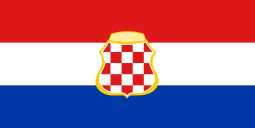
.svg.png)
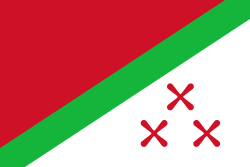
.svg.png)
- Manitoba – short-lived republic led by Thomas Spence, declared after the Hudson's Bay Company gave up Rupert's Land and before the government of Canada took control (1867).

.svg.png)


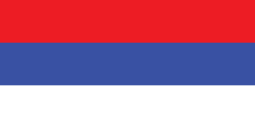

.svg.png)
Annexed countries
These nations, once separate, are now part of another country. Cases of voluntary accession are included.






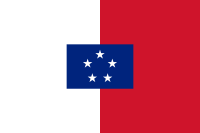
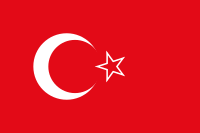
.svg.png)

- Free States of Menton and Roquebrune – Seceded from Monaco in 1848, under nominal protection of the Kingdom of Sardinia, then annexed by France in 1861.



.svg.png)



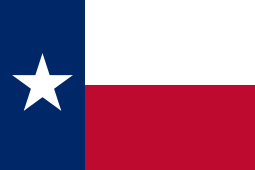
- Transylvania – Semi-independent before becoming part of Austria-Hungary. Became part of Romania after World War I.
See also
- List of Bronze Age states (c.3300–1200 BC)
- List of Iron Age states (c.1200–600 BC)
- List of Classical Age states (c.600 BC–AD 200)
- List of states during Late Antiquity (c.200–700)
- List of states during the Middle Ages (c.700–1500)
- List of sovereign states
- List of former national capitals
- List of historic states of Italy
- List of historic states of Russia
- List of historic states of Germany
- Former countries in Europe after 1815
- List of largest empires
- List of micronations
- Timeline of sovereign states in Europe
Further reading
- Berge, Bjørn. Nowherelands: An Atlas of Vanished Countries 1840–1975. New York: Thames & Hudson, 2017 ISBN 9780500519905 240p.
- Harding, Les. Dead Countries of the Nineteenth and Twentieth Centuries: Aden to Zululand. Scarecrow Press, 1998. ISBN 0-8108-3445-6